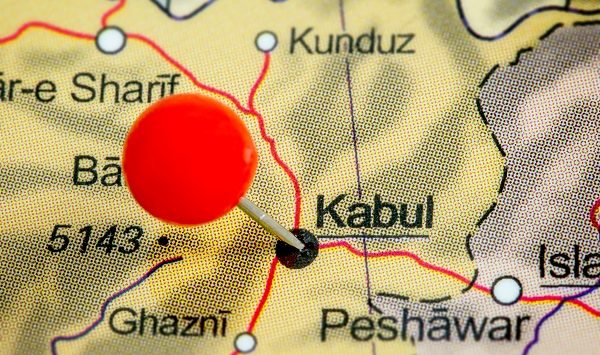Issue Briefs

Endless terrorism in Afghanistan
Fazle Chowdhury
February 2, 2018
The recent blast shook Kabul’s streets. The incident appeared to be near a central part of the city with offices of European Union, a shopping market area and a hospital. The bomb exploded in the crowded street at 12:15pm Kabul time on Saturday January 27. It was set off by an attacker who managed to pass through a very tight security checkpoint disguised as a driver of a hospital van.
Latest of many deadly attacks
This is the third largest terror attack in Afghanistan. Taken together, they killed 103 people, while wounding 235 in Kabul inside of eight months. Last October, 176 people died in one week alone, with Afghan security forces battling the Taliban facing massive losses and casualties. In May 2017, another 150 people were killed in Kabul.
According to the Afghanistan government, the perpetrators were the Pakistan-backed Haqqani group, although no evidence has been produced. It is also worth stating that, unlike other instances, the Taliban have now claimed responsibility for this massacre.
Are the Taliban really succeeding?
Most military analysts will concede that the Taliban at present is a much rejuvenated, technology-savvy, military capable and politically astute organization. Today’s Taliban is a far cry from the one that scattered and dispersed after the U.S. invasion of Afghanistan in 2001. However, that is not to say that they do not have problems within their own camp.
Problems
With the assassination of the Taliban leader Mullah Dadullah’s in 2007, a new breed of leaders, kingmakers and fighters have joined the ranks. This means that the Taliban has become something akin to an umbrella group that consists of a loose coalition of fighters. The top Taliban leaders realize that many of their own fighters do not necessarily share the objectives of the central leadership of Hibatullah Akhundzada. The Taliban also realize that they can neither marginalize the extremist jihadist fighters nor bring more moderates into their fold.
The far bigger worry that is shared by the older Taliban leaders is that splinter groups are now developing rapidly. These groups of fighters are often younger, faster, know how to exploit social media, while they are also more efficient in the art of bombing and explosives warfare, are more extremist in their ideology, while they have a better way to access regional players, warlords, smugglers, criminal networks and intelligence agencies.
Lack of unity
What they do lack is a clear strategic policy that aligns with the Taliban. A key example of this was the defection of the one-time governor of Nimruz Province, Mullah Muhammad Rasul. Along with his fighters, he broke away from the Taliban to form his own High Council of Afghanistan Islamic Emirate group in 2015. Along with his group, Rasul continues to amass a considerable fortune controlling cross-border drug smuggling through Nimruz province.
Unlike in the past, the new generation of individuals and their networks have alliances that are always shifting, sometimes even against the Taliban’s own objectives, as access to money, firearms and the ability to plan attacks are much more feasible now than they were before.
This has been possible mainly because since 2011 a large contingent of US Army forces have left Afghanistan, this way leaving ample room for the insurgents. Besides, the small contingent of American forces that are supporting the Afghan Army have very little knowledge of the networks of rural villages which form the natural ecosystem in which this new generation of Taliban fighters thrive.
What is the Afghanistan government’s response?
Kabul, home to President Ashraf Ghani’s government used to be one of the safest cities in Afghanistan; but now it is becoming increasingly dangerous, as the large number of deadly terror attacks indicates. Additionally, the presence of Islamic State or ISIS, as they are known in Afghanistan, has also added to the level of insecurity.
The emerging insecurity felt by Afghans does not seem to have alarmed the central government. Though the government has condemned all the attacks and blamed Pakistan, it is mostly dangerously embroiled in its own corruption issues.
In October of 2017 President Ashraf Ghani told CNN that being President of Afghanistan “is the worst job on earth”. The frustrations of this former World Bank anthropologist lies in his own battle in finding credible Ministers, along with domestic and international partners, in order to bring badly needed vibrancy to a battered Afghan economy.
President Ashraf Ghani is well versed in the art of nation building. In 2006, he built the Institute of State Effectiveness. However, he is all too aware that in his government there is rampant corruption. This is particularly evident in rural development programs, which are central in a strategy that was aimed at developing nearly 35,000 of the roughly 40,000 villages across the country. This would have meant providing 70% of Afghans with vital infrastructure, such as midwife clinics, schools, waterworks, bridges, roads, women’s training centers, and solar power projects. Sadly, the program failed.
However, the truth is that it wasn’t the Taliban or its competing terrorist groups that halted such an initiative, rather it was the political class itself that caused failure because many officials wanted to carve out large personal gains from this program. Bottom line, the Afghan central government is too weak to implement the growth and development initiatives it set forth, let alone taking on a re-energized Taliban.
What can be done?
Military aid from foreign donors, which in 2009 included $4 billion from the United States, equals 16 times Afghanistan’s domestic military expenditures. However, these large sums have failed to produce an effective Afghan National Army. The Army continues to face heavy losses against the Taliban and the other insurgents and terror groups. The National Directorate of Security, NDS, (the key Afghan Intelligence agency), has engaged in a warming up process with Pakistan, in the hope that the Pakistanis may be able to restrain some of the terror groups they deal with. But this did not help, as some of the deadliest of attacks keep reoccurring.
More terrorism, more instability
The terrorism problem will continue. At present, the possibility of a political settlement with the Taliban appears very remote. Meanwhile, the government hangs on. The air support provided by the United States military for now has created a bulwark against greater advances by the Taliban blocking their efforts to take over Kabul. However, the Taliban now control a large part of Afghanistan.
Corruption has crippled the Afghan government. A weak Afghan army maybe battle-hardened; but that has not resulted in any significant progress in the battlefield. Meanwhile, all Afghan ethnic groups are victims.
In the end, it is really difficult to understand what lies ahead in Afghanistan. What will happen if the United States military forces were to leave? Will Iran and Pakistan then divide the spoils? Or will the Taliban and its affiliates become even more brutal in order to consolidate their grasp on Afghanistan?
 |
Fazle Chowdhury is a Global Policy Institute Fellow. He is a Management Consultant and founder of FazC – a Public Speaking firm specializing in Conflict Economics. Mr. Chowdhury‘s experiences include monitoring terrorism finance, developing effective financially strategic battle plans to strengthen Client organization’s incidents and Consulting with the US Department of Defense. His previous professional engagements include the United Nations Development Program (UNDP) – Azerbaijan, Booz Allen Hamilton, IBM, and Price Waterhouse Coopers. Mr.Chowdhury received his Master of Science in Organization Management from Northeastern University and has also completed the Executive Program & Stewardship in Management from Harvard University’s Kennedy School of Education.
The views and opinions expressed in this issue brief are those of the authors and do not necessarily reflect the policy of GPI. |